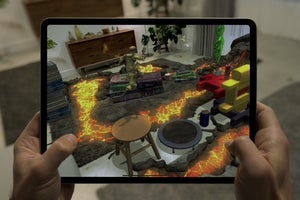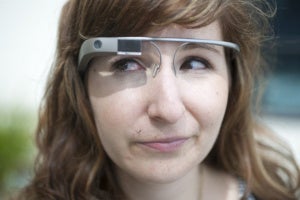Looking at Apple’s AR glasses with more clarity
Rumors of an Apple augmented reality headset have been around for years, but in the last few weeks speculation has rapidly begun to ramp up, alongside suggestions that the product could be shown off as early as this year, and might even ship as early as next year.
On the one hand, maintaining skepticism is still healthy. Though Apple has had its share of product leaks over the years, it's still a company that plays things extremely close to its chest—especially when it comes to prototype hardware. (Unsurprisingly, after the infamous incident in which a pre-release iPhone 4 was left in a bar nearly a decade ago, it's been extra cautious.)
But the sheer number of rumors and amount of speculation are probably based on something, so it's not a bad time to take a look at what a pair of Apple smart glasses could be, and the challenges that they have to overcome.
AR, matey
Apple's been talking up augmented reality for what seems like forever, with Tim Cook frequently calling it out as a specific area of interest. What seems like hours of interminable AR demos have graced the stage at Apple events, with people pointing iPads and iPhones at blank tables to show how they can interact with virtual objects. And the company recently rolled out the new iPad Pro, its first device with LIDAR, which is a technology that has a lot of potential for AR.
But all of it has seemed lacking. Because, fundamentally, when you're using an iPhone or iPad to peer into a virtual environment, it's like peeking through the windows of a fancy house—hardly the kind of immersion that you're aiming for when you're pitching something as an improvement on reality.
Hence the potential of a device you wear on your face, where you don't have to hold up a rectangle to see the melding of the real world and the digital. It certainly seems like precisely what a company like Apple would be building to, after all this time of laying the groundwork. But Cupertino's not the first to try it.
In your face
Real, compelling AR devices are, if not quite the Holy Grail, then at least one of those products that tech companies have been trying to nail for years. Google Glass was the most prominent example when it launched back in 2013, and while it garnered a lot of attention, it never really caught on with the public. In some cases, it even earned a negative reputation, as its built-in camera raised many a privacy concern. Since then, companies from Microsoft to Snapchat have tried their hands at smart glasses or head-mounted displays, with varying levels of commitment and success.
But Apple's no stranger to entering markets late. It gets the benefit of seeing where those earlier projects have misstepped, which is one reason I'm guessing that we haven't heard, say, specific rumors about outward-facing cameras in the Apple glasses. As with the Apple Watch, iPhone, iPod, and even the Mac, Apple is no doubt biding its the time to produce a highly polished product that will seem like the natural expression of such a technology.
Another key factor that has hurt adoption of previous smart glasses is something tech isn't always great at: style. After all, smart glasses have to be something that you choose to wear on your face, not a piece of tech that can be hidden under a sleeve or tucked into a pocket. But Apple has always focused on making its devices beautiful and, with the Apple Watch, it spent some energy into trying to make them fashionable too. Apple glasses are going to have to take that idea and put it at the forefront.
(Editor's note: The graphic at the top of this article is from a patent Apple filed several years ago. Presumably, the company has moved beyond the design depicted in the image and patent.)
If apps could kill
Looks and potential pitfalls aside, one big question remains: what exactly is this device for?
Apple's showed off a lot of things that augmented reality can do, from letting you play games that interact with the real world to apps that allow you to, say, measure a person's movement to help them treat an injury. That's a huge range of applications, and it certainly speaks to the potential of AR.
But rumor has it that the glasses will at first act as a satellite device, much like early versions of the Apple Watch, which makes the smart watch an apt precedent to look toward. What's needed with AR is a narrowing of focus, the same way that the Apple Watch at first attempted to be everything to everyone, but found more purchase once it ended up primarily dealing with fitness and notification.
As with the Apple Watch, I think unobtrusiveness is a key part of the device. I can't think of anything worse than a barrage of notifications floating in front of my eyes. Mapping and directions have always seemed a natural fit for AR, especially with Apple's recent re-building of its maps infrastructure, though in the current world environment, it may not be as compelling a use case as it once was.
But ultimately, it comes down to vision—if you'll pardon the expression. One thing Apple stresses whenever it introduces a new device or feature is the story of that technology. It helps transform something from a mere gadget into something that we look and say "Oh, that's what it's for." So while we might think we know what Apple's AR glasses are for, we're still missing the whole story.




0 коммент.:
Post a Comment